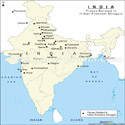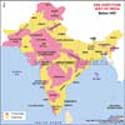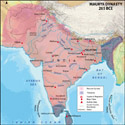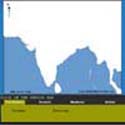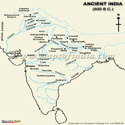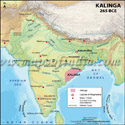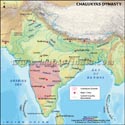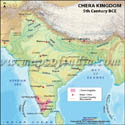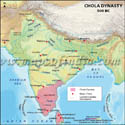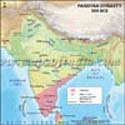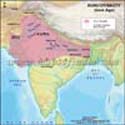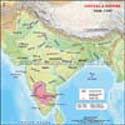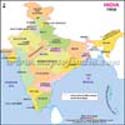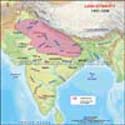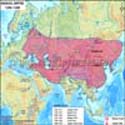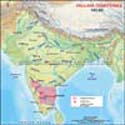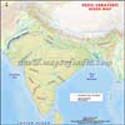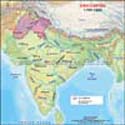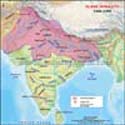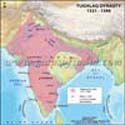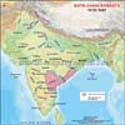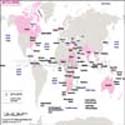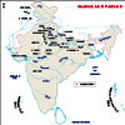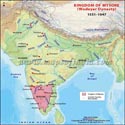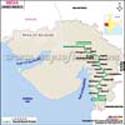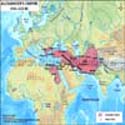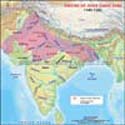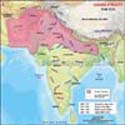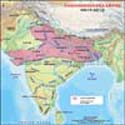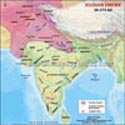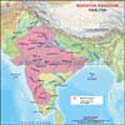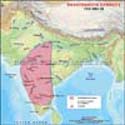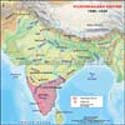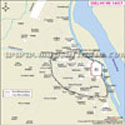The history of India is one of the grand epics of world history and can be best described in the words of India's first Prime Minister Jawaharlal Nehru as "a bundle of contradictions held together by strong but invisible threads". Indian history can be characterised as a work in progress, a continuous process of reinvention that can eventually prove elusive for those seeking to grasp its essential character.
The history of this astonishing sub continent dates back to almost 75000 years ago with the evidence of human activity of Homo sapiens. Amazingly, almost five thousand years ago, the inhabitants of the Indus Valley Civilisation had developed an urban culture based on commerce and sustained by agricultural trade.
Following is the history of India through the Ages:
The Stone Age began 500,000 to 200,000 years ago and recent finds in Tamil Nadu (at C. 75000 years ago, before and after the explosion of the Toba Volcano) indicate the presence of the first anatomically humans in the area. Tools crafted by proto-humans that have been dated back to two million years have been discovered in the North-western part of the country.
The Bronze Age in the Indian subcontinent dates back to around 3300 BCE with the early Indus Valley Civilisation. Historically part of ancient India, it is one of the world's earliest, urban civilisations, along with Mesopotamia and Ancient Egypt. Inhabitants of this era developed new techniques in metallurgy and handicraft and produced copper, bronze, lead and tin.
The Aryans were the first to invade the country. They came out of the North in about 1500 BC and brought with them strong cultural traditions. Sanskrit, one of the most ancient languages spoken by them, was used in the first documentation of the Vedas, which date back to the 12th century BC and are believed to be oldest scriptures still in use.
The Vedas are some of the oldest extant texts, next to those in Egypt and Mesopotamia. The Vedic era in the subcontinent lasted from about 1500-500 BCE, laying down the foundation of Hinduism and other cultural dimensions of early Indian society. The Aryans laid down Vedic civilisation all over North India, particularly in the Gangetic Plain.
This period saw the second major rise in urbanisation in India after the Indus valley Civilisation. The word "maha" means great and the word "janapada" means foothold of a tribe. In the later Vedic Age, a number of small kingdoms or city states had mushroomed across the subcontinent and also find mention in early Buddhist and Jain literature as far back as 1000 BCE. By 500 BCE, sixteen "republics" or Mahajanapadas has been established, namely; Kasi, Kosala, Anga, Magadha, Vajji (or Vriji), Malla, Chedi, Vatsa (or Vamsa), Kuru, Panchala, Matsya, Surasena, Assaka, Avanti, Gandhara, and Kamboja.
Much of the Northwest subcontinent (currently Afghanistan and Pakistan) came under the rule of the Persian Achaemenid Empire in C. 520 BCE under the rule of Darius the Great and remained so for two centuries. In 326 BCE, Alexander the Great conquered Asia Minor and the Achaemenid Empire, when he reached the Northwest frontier of the Indian subcontinent he defeated King Porus and conquered most of Punjab.
The Maurya Empire, ruled by the Mauryan Dynasty from 322-185 BCE was a geographically extensive and mighty political and military empire in ancient India, established in the subcontinent by Chandragupta Maurya in Magadha (present-day Bihar) and it further thrived under Ashoka the Great.
In the long march of centuries, India has witnessed the rise and fall of several empires and conquerors.The political map of pre-modern India,before the British arrived, was made up of countless kingdoms with fluctuating boundaries that rendered the country vulnerable to foreign invasions.There have been various dynasties fighting battles among themselves and against foreign invaders - Aryans, Persians, Greeks, Chinese nomads, Arabs, Mughals, French, Dutch, Portuguese, British and others. Wave after wave of foreign aggressors descended on India, founded empires and left a deep imprint on the history and culture of the country. But none could not subdue or subjugate the indomitable soul of Bharatvarsh.
As history is a great educator, it would be interesting to recapitulate some of the major battles that have marked turning points in the history of India:
In 1526, Babur, a descendant of Timur and Gengis Kahn from Fergana Valler (present-day Uzbekistan) swept across the Khyber Pass and established the Mughal Empire which covered modern-day Afghanistan, Pakistan, India and Bangladesh. The Mughal dynasty ruled most of the Indian subcontinent till 1600; after which it went into decline after 1707 and was finally defeated during India's first war of Independence in 1857.
From the 16th century, European powers from Portugal, Netherlands, France and the United Kingdom established trading posts in India. Later, they took advantage of internal conflicts and established colonies in the country.
The British Rule in India began with the coming of the British East India Company in 1600 leading to the rule of Queen Victoria. It culminated in the First War of Indian Independence in 1857.
Most rebelling Indians accepted Bahadur Shah Zafar as the Emperor of India under whom they united. But he fell to the wily machinations of the British. His fall marked the end of more than three centuries of Mughal rule in India.
Bakht Khan: Bakht Khan, a subedar in the army of the East India Company, built up an army of Rohilla sepoys. After sepoys in Meerut revolted against the British in May 1857, he became commander of the sepoy forces in Delhi. Mangal PandeyMangal Pandey: Mangal Pandey, part of the 34th Bengal Native Infantry, is primarily known for his involvement in attack on his senior British officers on 29th March 1857 at Barrackpore, an incident that marked the beginning of the First War of Indian Independence.
Nana Sahib: Nana Sahib, the adopted son of exiled Maratha Peshwa Baji Rao II, led the revolt at Kanpur.
Rani Lakshmibai: She fought valiantly against the British troops along with Tatya Tope. However, on the 17th of June 1858, while battling against the British near the Phool Bagh area of Gwalior, she laid down her life.
Tatya Tope: Tatya Tope, a close associate and general of Nana Sahib, fought against the British and joined forced with Rani Lakshmibai.
Veer Kunwar Singh:The king of Jagdispur, currently a part of Bhojpur district, Bihar, Veer Kunwar Singh, led armed soldiers against the British troops.
The Indian Independence Movement and Mahatma Gandhi:
In the 20th century Mahatma Gandhi led millions of people in a national campaign of non-violent civil disobedience to obtain independence from the British in 1947.
India Freedom Struggle
Religious tension between the Hindus and Muslims had been brewing over the years, especially in provinces like Punjab and West Bengal, accentuated by the British policy of divide and rule. All through this Mahatma Gandhi called for unity among the two religious groups. The British, whose economy had been weakened after World War-II, decided to leave India and paved the way for the formation of an interim government. Eventually, the British Indian territories gained independence in 1947, after being partitioned into the Union of India and the Dominion of Pakistan.
As many civilizations the Greek, the Roman, and the Egyptian - rose and fell, leaving only ruins, the Indian civilisation and culture remained unscathed. Even wave after wave of invaders descended on the country, founded empires and ruled over its different parts, the indomitable soul of Bharatvarsh could not be subjugated.
Today, India marches proudly as the most vibrant republic and largest democracy of the world, an influential nation in South Asia and an emerging global superpower.
India is the second largest country in Asia and the seventh largest and second most populous country on Earth. It comprises as much as one third of Asia and supports one seventh of humanity.
